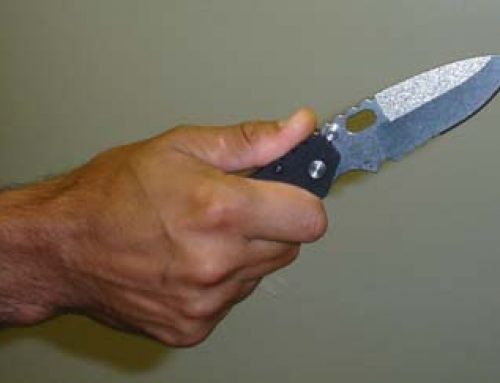 At the end of the day which of us doesn’t look forward to coming home? It’s the one place where your surroundings are the most familiar; you spend the majority of your off hours, wake up in the morning after a restful sleep, and immerse yourself in the things that mean the most to you. Home is where you spend quality time with your family and ultimately it’s where you kick your feet up at the end of a long day. Home is your castle, your sanctuary, your favorite place to be; it’s where you and your family are the safest and feel the most secure. It’s also a primary target of the predator.
At the end of the day which of us doesn’t look forward to coming home? It’s the one place where your surroundings are the most familiar; you spend the majority of your off hours, wake up in the morning after a restful sleep, and immerse yourself in the things that mean the most to you. Home is where you spend quality time with your family and ultimately it’s where you kick your feet up at the end of a long day. Home is your castle, your sanctuary, your favorite place to be; it’s where you and your family are the safest and feel the most secure. It’s also a primary target of the predator.
Looking at it from the viewpoint of a predator, your home is a one-stop-shop of exploitable opportunity. To the drug addict, repeat offender, and criminal opportunist your home is a treasure trove of cash, expensive jewelry, high-end electronics, weapons, tools, and precious metals. To the sexual predator, your home is a prime hunting ground where potential victims can be predictably observed and targeted, knowing that when they are asleep or otherwise occupied that they are vulnerable to attack.
Knowing that the law enforcement will most likely respond, most people think; “Well, if something bad happens here at home I’ll just dial 911.” Instead of relying 100% on a reactive response, others choose the option of being better prepared to manage a home invasion by being armed with the full gamut of proactive, active and reactive measures.
What can be done proactively to shield your home? There is a traditional protective concept called concentric rings of protection using multiple “rings”—circles or layers of security used to create that 360 degree envelope of protection around your home and all residents.
The concentric rings—multiple circles or layers—are like an onion of security wrapped around your home. the first layer would be located at the outer boundary, with additional layers as you move inward through your home toward things you value most. Rather than placing full reliance on a single layer or ring of protection, the application of multiple layers requires an intruder to penetrate a series of protective layers to reach his goal. The more protective layers or rings that exist between the outside world and the things contained inside, the better your protection.
The outermost ring – the perimeter defensive layer – might include a continuous fence, locking gates, exterior motion-sensor alarms or lighting, and a dog.
The second ring in – the exterior defensive layer, at any area of entry to the building – might include solid hardwood or metal exterior doors, an alarm, surveillance cameras, and sturdy bolt locks.
The third ring in – the interior defensive layer – might include internal locking doors, additional lighting, indoor motion detectors, and so on.
The fourth ring in – the core interior defensive layer – could include locking cabinets, a rugged safe, a safe room, and the like.
The primary tool used to actively defending your home is simply using your situational awareness. Take about three seconds to scan your immediate environment upon arrival and departure from your home looking for anything that doesn’t seem right. If nothing out of the ordinary, then no action required. Additional using your verbal skills – not shouting over the fence to your neighbor “Hey I’m going on vacation and nobody will be here for the next two weeks!” Refrain from sharing additional information such as discussing your storage of valuables or weapons.
If you are forced into a defensive position in your own home by home intruders, and if you do own a firearm, have access to it (and ammunition), and you are qualified and willing to utilize it to defend your home and family, after you have retreated to your safest position, then it is recommended you dial 911, put the phone on speaker and provide one warning to the intruder(s). Using your verbal skills shout “get out of my house – I am in fear for my life and I have a gun – get out.” Say it only once—phone calls to 911 are in most cases recorded and this advises both incoming first responders and your assailant that you are in fact armed and prepared to utilize deadly force.
Remember that long before it ever comes down to taking reactive measures, that you have a plethora of proactive and active measures at your disposal. However, there is a balance between level of protection and convenience which must be struck. The last thing you want to do when coming home at the end of your long day is to cross a moat, unlock three heavy steel gates, pass the four Dobermans, fumble with another set of keys to unlock five more deadbolts, successfully pass a retinal scan and take another ten minutes to disarm your house—all with both arms full of groceries. The same would apply to all members of your household.
On the other end of the spectrum, you don’t want to leave all your doors and windows wide open 24/7 even when you’re not home. The answer falls somewhere in between. You don’t ever want to sacrifice convenience for security and vice versa. Utilizing a wide range of proactive and active protective measures can significantly lower your threat profile and ensure an effective yet comfortable level of home defense.
~ Steve Tarani
Professional Educator, Author, Keynote Speaker






